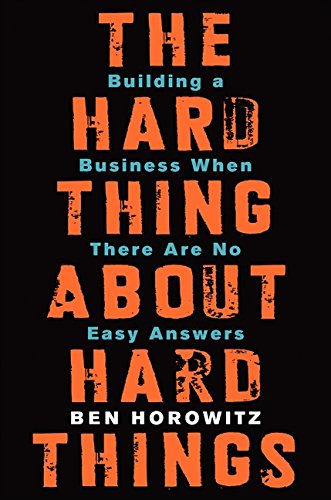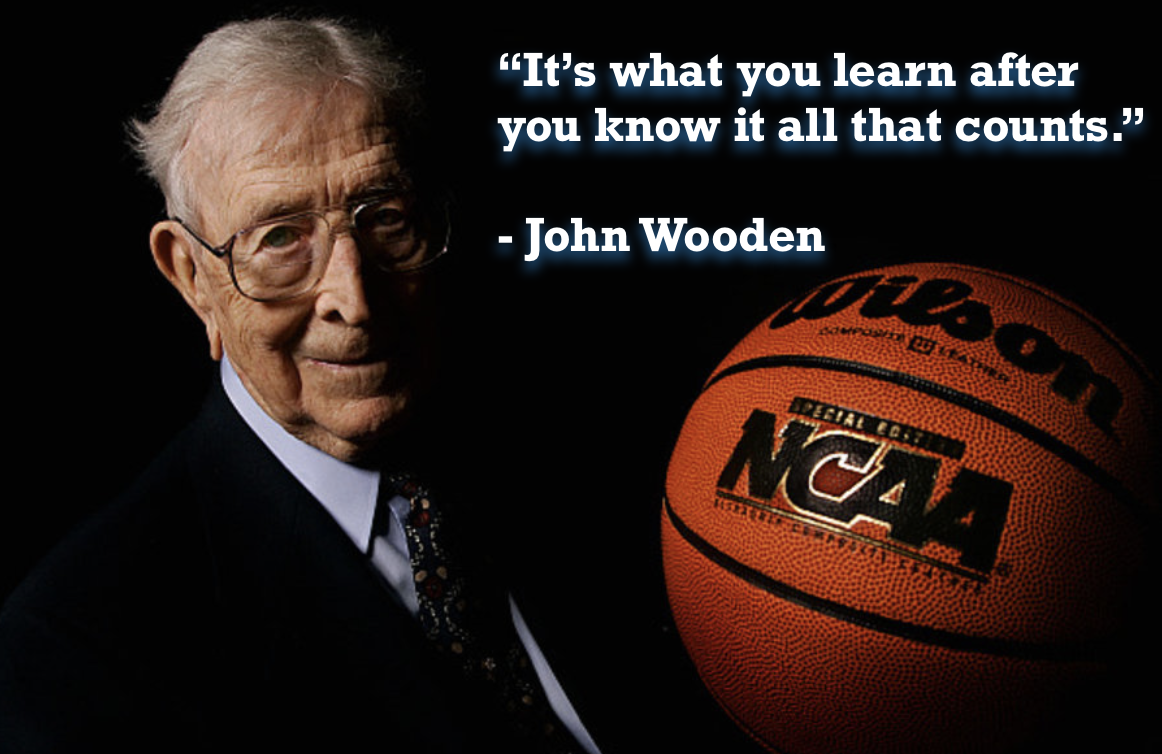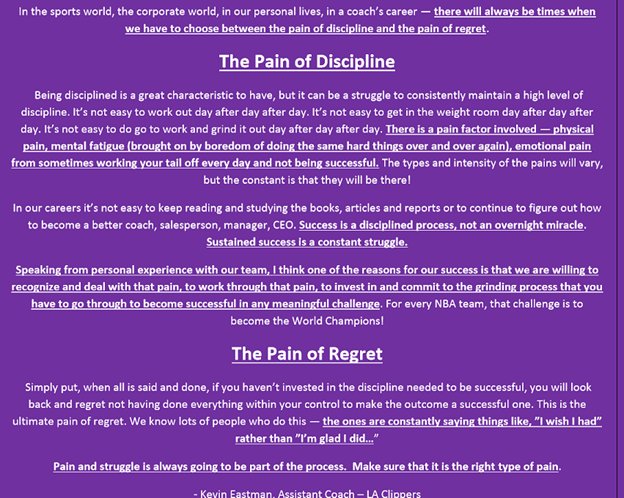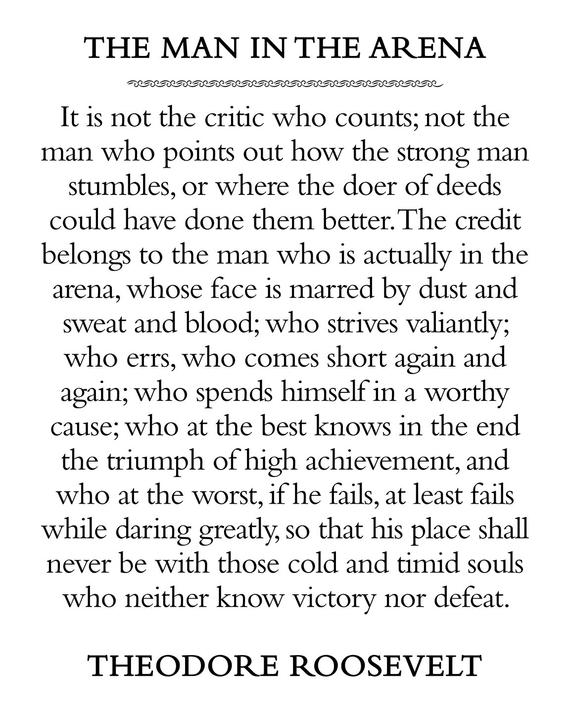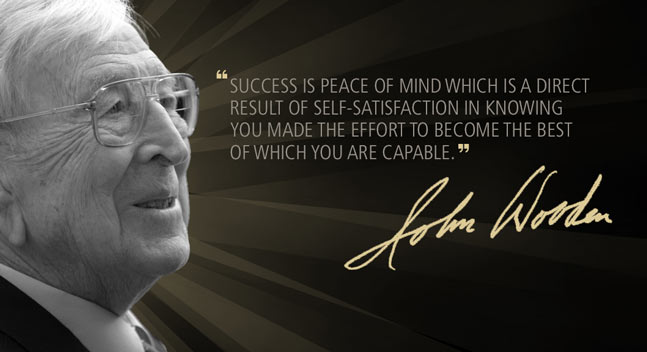I recently read and reread Ben Horowitz’s book The Hard Thing About Hard Things: Building a Business when there are no easy answers. It’s probably the best business book I’ve ever read as it reveals the excruciating realities of running an organization and strategies for dealing with difficult decisions. Throughout the book, I was able to pick out some key points that resonated and draw some parallels to coaching baseball. Below are my thoughts.
The Fine Line Between Fear and Courage
“In high school football, being able to handle fear is 75 percent of the game.” – Pg. 4
Heard this one before? Baseball might not have the physical confrontation of football, but it does not make it any less scarier. For many of us, sports are our first experience in dealing with fear. The idea of no fear is a myth – all athletes must learn how to deal with fear. Horowitz learned this at a young age and used this experience to help prepare him for his time as a CEO. If you think playing a kid’s game is difficult, just try managing a million dollar business that’s weeks away from bankruptcy.
To understand the fine line between fear and courage, Ben shared a quote from Cus D’Amato – legendary boxing trainer – on page 209. It read:
“I tell my kids, what is the difference between a hero and a coward? What is the difference between being yellow and being brave? No difference. Only what you do. They both feel the same. They both fear dying and getting hurt. The man who is yellow refuses to face up to what he’s got to face. The hero is more disciplined and he fights those feelings off and he does what he has to do. But they both feel the same, the hero and the coward. People who watch you judge you on what you do, not how you feel.”
When Ben was running Loudcloud and Opsware, he never once felt brave. Most of the time he felt scared to death. However, he learned how to ignore these feelings by having the discipline to make necessary but unpopular decisions. He calls this the courage development process. For every hard, correct decision we make, we become a bit more courageous. For every easy, wrong decision we make, we become a bit more cowardly.
As coaches, we’re going to be faced with plenty of difficult decisions that test our courage and ability to lead. We’re going to be responsible for a group of young men that look up to us for answers. When things go wrong, no one is going to take the consequences harder than us. We have to learn how to take ownership in these situations, but we can’t take things too personally. When things go wrong we can’t just put the weight on our shoulders. Horowitz explained saying:
“I thought that it was my job and my job only to worry about the company’s problems. Had I been thinking more clearly, I would have realized that it didn’t make sense for me to be the only one to worry about, for example, the product not being quite right – because I wasn’t writing the code that would fix it. If I insisted on keeping the setbacks to myself, there was no way to jump-start that process. . . A brain, no matter how big, cannot solve a problem it doesn’t know about.”
At the end of the day, however, it is your company. You’re going to call the shots and make the decisions when everything seems like it’s falling apart. If you feel fear in these moments, understand you’re not alone – it only makes you human.
Plenty of people ask Horowitz what the secret sauce is when it comes to becoming a successful CEO. He said, “Sadly, there is no secret, but if there is one skill that stands out, it’s the ability to focus and make the best move when there are no good moves. It’s the moments where you feel most like hiding or dying that you can make the biggest difference as CEO.”
Taking Care of the Most Important Thing
“Flowers. Flowers are really cheap. But do you know what’s expensive?” – Pg. 8
The question from above comes from Ben’s father as the two sat in 105 degree heat with three crying kids because Ben couldn’t afford air conditioning. When Ben asked what his dad replied, “Divorce.”
It was at this moment that Ben realized he was going to lose his family if he continued on the course he was on. He had never considered that he didn’t have unlimited bandwidth and could do everything he wanted to simultaneously. He said, “I thought I could pursue my career, all my interests, and build my family. More important, I always thought about myself first. When you are a part of a family or part of a group, that kind of thinking can get you into trouble, and I was in deep trouble. I had to stop being a boy and become a man.
“By doing everything, I would fail at the most important thing.”
Don’t become so clouded by your passion that you fail to take care of what really matters.
Why your employees need a clear set of expectations and training for their job
“People at McDonald’s get trained for their positions, but people with far more complicated jobs don’t. It makes no sense.” – Pg. 105
When you bring people into a company, they need to become assimilated as quickly as possible so they start growing your company immediately. If you want to get them up to speed, you need to first lay out exactly what their title is, what their responsibilities are, how to do their responsibilities, and how they will be measured or graded. This is accomplished by defining the expectations for each job and training the employee how to do it.

Bill Belichick – head coach of the New England Patriots – is very precise with his assistants about what will be expected of them. Nick Saban talked about this when working under Belichick in Cleveland saying:
“I think that probably working for Bill Belichick probably helped me the most in that regard, because it’s really the first person that really defined the expectation for what he wanted everybody in the organization to do, whether they were in personnel, whether you were a coach, whether you were defensive coordinator. And that made the job so much easier for me and it made me grow as a coach, because I knew exactly what was expected.”
When you can set a baseline for expected performance, the next most important thing you need to do is train them how to do it. People are going to be your most important asset in a business. Hiring the “right guy” will only take you so far if you do not lay out how they are supposed to do their job. Andy Grove, author and well-known businessman, talks about the importance of training saying there are only two ways for a manager to improve the output of an employee: motivation and training. If your employees aren’t being trained, a disconnect is created between management and the employee. If employees aren’t aware of what should be done, how it should be done, and when it should be done, the only person you should be mad at as a CEO is yourself.
Oh, and “not having the time” to train your employees isn’t a good enough excuse for Ben. “Keep in mind that there is no investment that you can make that will do more to improve productivity in your company,” said Horowitz. “Therefore, being too busy to train is the moral equivalent of being too hungry to eat.”
If you have clearly laid out what each person in your organization needs to do and how to do it, you have given yourself the ability to hold them accountable. If you want to keep your group aligned towards a common goal, you need to be able to keep everyone – yourself included – accountable to what they’ve agreed on. This process requires one of the most uncomfortable things you need to do as a CEO: giving clear and honest feedback.
Horowitz talked about the importance of feedback saying, “Companies execute well when everybody is on the same page and everybody is constantly improving. In a vacuum of feedback, there is almost no chance that your company will perform optimally across either dimension. People rarely improve weakness they are unaware of. The ultimate price you will pay for not giving feedback: systematically crappy company performance.”
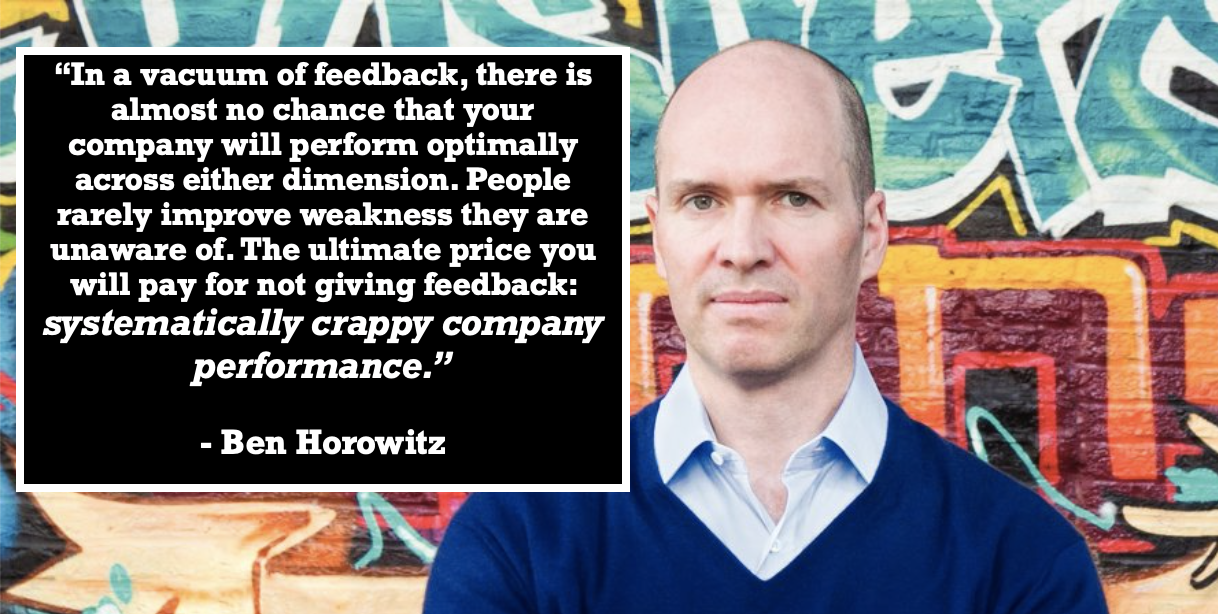
There are several keys to giving good feedback, but one of the most important is not sugar coating it. Ben described this using a story where he had to give feedback to a senior employee. He tried to give it using the sandwich technique where he wrapped the negative feedback between a couple of positive compliments. After Ben finished, she responded, “Spare me the compliment, Ben, and just tell me what I did wrong.”
When feedback is constant, honest, and immediate, it becomes the norm for your organization. If there’s a problem that needs attending, people won’t hide it because they’re afraid of being wrong. Your organization needs to be comfortable sharing bad news. Ben said, “A good culture is like the old RIP routing protocol: Bad news travels fast; good news travels slow.” If you let the bad news spread without addressing it immediately, you’ve opened up the opportunity for politics – what we’ll discuss next.
How to Minimize Politics in your Company
“Political behavior almost always starts with the CEO. . . In fact, it’s often the least political CEOs who run the most ferociously political organizations. Apolitical CEOs frequently – and accidentally – encourage intense political behavior.” – Pg. 147
Politics, in Ben’s words, is “people advancing their careers or agendas by means other than merit or contribution.” No one likes politics, but plenty of people will use them. Trying to run an organization without knowing how to recognize and manage them is a recipe for disaster. Step one is learning how to set the tone from up top.
Ben has found two techniques useful when it comes to managing politics. First, it’s imperative to hire people with the right kind of ambition. People with the right ambition are going to be motivated by the success of the organization while the people with the wrong kind of ambition are obsessed with their personal success. Getting the right people on board is going to be your best defense against political behavior. If you brought on someone who was motivated by a personal agenda, you need to examine your hiring process and find out why you made a mistake. Your people are the most important part of the organization. You cannot afford to shoot yourself in the foot and bring on people who have political motives.
The second technique Ben used as CEO was building and adhering to a strict process that would handle potentially political issues. These include performance evaluation and compensation, organizational design and territory, and promotions. This makes sure that employee compensation, raises, and promotions are done as fairly as possible and internal conflicts are handled efficiently. You’re going to get to a point in your business where people are going to complain about behavior or even competence. If it’s about behavior, you need to address the issues with both parties in the same room. If it’s about competence and it’s something you’ve known about, you’ve let the situation go too far and that employee more than likely needs to be terminated. If this is something you haven’t heard before, you need to disagree with the initial assessment and do research of your own before coming to a conclusion.
The Right Way to Lay People Off
“People won’t remember every day they worked for your company, but they will surely remember the day you laid them off.” – Pg. 71
If you have decided you need to lay people off, you need to act on your decision as quickly as possible. If there is a gap between your decision and execution, you invite room for politics. When you’re laying off someone who trusted you and worked hard for you, you need to come clean as CEO. This starts by being accountable for the performance of the company.
“You are laying off people because the company failed to hit its plan,” said Horowitz. “Company performance failed. This distinction is critical, because the message to the company and the laid-off individuals should not be “This is great, we are cleaning up performance.” The message must be “The company failed and in order to move forward, we will have to lose some excellent people.”
A layoff breaks trust, especially with the people who survive the layoff. They interacted and had relationships with people who you’re going to have to let go. They care about how you treat them. As CEO, this is a really important time to be visible in the company. Don’t hide and let the emotions of a layoff get the best of you. Be present and show people that you care. Help laid off employees pack up their things and carry stuff to their car. They need to know that their efforts were appreciated.
At the end of the day, a lay off is not an open dialogue the way feedback is. Stand strong behind your decision and use words like “I decided” instead of words like “I think” or “I might.” Their future in your company is non-negotiable. This is especially important when you have to fire managers, executives, or other people of power within your organization. You owe them clarity on what happened and how you plan to help them move on.
You can’t let them keep their job, but you can absolutely let them keep their respect.
Peacetime vs. Wartime CEOs
“There may be nothing scarier in business than facing an existential threat. So scary that many in the organization will do anything to avoid it. . . If you have the better product, why not knuckle up and go to war?” – Pg. 89-90
As a business, you are likely in one of two times: peacetime or wartime. Peacetime, as Horowitz explains, is “(T)imes when a company has a large advantage over the competition in its core market, and its market is growing.” The primary focus for companies in peacetime is expanding the market and reinforcing the company’s strengths. There is more flexibility for creative thinking within the core mission of the company. An example of this is when Google required its employees to spend 20 percent of their work on new personal projects during its dominance in the search market.
On the contrary, wartime is the exact opposite. “In wartime, a company is fending off an imminent existential threat,” said Horowitz. “Such a threat can come from a wide range of sources, including competition, dramatic macroeconomic change, market change, supply change, and so forth.” While a lot of management books focus on peacetime CEOs, few cover the ugly realities of navigating a business through wartime. During this time, there is no room for individual creativity – there is one bullet and it must hit the target. Survival is dependent on strict adherence and alignment to the mission. An example of this was when Steve Jobs returned to Apple when it was weeks away from bankruptcy. There was no room for individual creativity like Google – everyone had to follow the plan Jobs designed.
Operating in peacetime and wartime requires a significant contrast in leadership strategies. They are as follows below:
| Peacetime CEO | Wartime CEO |
| Focuses on big picture, empowering employees to make detailed decisions | “Cares about a speck of dust on a gnat’s ass if it interferes with the prime directive” |
| Spends time defining culture | War defines culture |
| Knows how to manage big advantage | Paranoid |
| Manages language, tone | Rarely speaks in normal tone, without swearing |
| Works to minimize conflict | Heightens contradictions |
| Expand market | Win market |
| Sets big, hairy, audacious goals | “Too busy fighting the enemy to read management books written by consultants who have never managed a fruit stand” |
| Focuses on employee satisfaction and career development | Focuses on making sure employees don’t get shot in battle |
| Can exit any business they are not #1 or #2 in | Has no business that is #1 or #2 |
When you’re building a business, there are no silver bullets. Everyday you need to assess where you are, where you want to go, and how you can bridge that gap. Peacetime CEOs have the flexibility to expand the market and build on what they currently have. Wartime CEOs have no room for bullshit – they have to go through the front door and “deal with the big, ugly guy blocking it.”
Some can manage peacetime better and others can manage wartime better. Very few are able to manage both. In either case, things are bound to eventually go wrong. These moments will reveal your identity as a leader and a company.
“There comes a time in every company’s life where it must fight for its life,” said Horowitz. “If you find yourself running when you should be fighting, you need to ask yourself, “If our company isn’t good enough to win, then do we need to exist at all?””
Follow the Leader
“Perhaps the most important attribute required to be a successful CEO is leadership.” – Pg. 219
While there is no prototype for the perfect leader, Horowitz shares three things all great leaders have in common: The ability to articulate the vision, the right kind of ambition, and achieving the vision.
Articulating the Vision
- Can you create a story that encapsulates the core reason for your existence?
- Is the vision interesting and compelling enough for people to buy into it?
- Can you articulate the vision and keep people around when everything is falling apart?
All great leaders are great storytellers. The best way to determine the strength of your narrative is if people really believe in you when everything has gone to hell. The story you create is going to get the right people on board and keep them on board through good times and bad. If people don’t know or believe in the vision, they won’t follow you down the same path.
The Right Kind of Ambition
- You need great people to work for you
- You can’t get great people to work for you if they don’t know you have their best interests in mind and in heart
- “Truly great leaders create an environment where the employees feel that the CEO cares more about the employees than she cares about herself.”
- If you talk the talk, you have to walk the walk
You don’t need to be a ruthless, gutless dictator to manage a successful company. If you want to attract great people, you need to show your employees that you care about them. People want to know that their work and well being is important to you. If they trust that you have their best interests in mind and in heart, they will run through a brick wall for you.
Achieving the Vision
- Do people believe you have the competence to get the job done?
- “Will I follow her into the jungle with no map forward or back and trust that she will get me out of there?”
- Don’t let confidence ruin your competence
Buying in to your vision ultimately comes down to whether people believe in you as a leader. You have to know your stuff if you’re going to achieve your vision as a leader. If you don’t, people aren’t going to trust you. If you do, don’t think you’re confident enough to get by with what you have. “Indeed, the enemy of competence is sometimes confidence,” said Horowitz. “A CEO should never be so confident that she stops improving her skills.”
The Hard Thing About Hard Things
“Hard things are hard because there are no easy answers or recipes. They are hard because your emotions are at odds with your logic. They are hard because you don’t know the answer and you cannot ask for help without showing weakness.” – Pg. 274
If you want to succeed as a leader, you need to understand that hard things suck and they are never going to stop. You can complain about why they suck or you can embrace the suck. If you accept that things aren’t going to go your way, you give yourself the ability to deal with them as a normal part of the process. It doesn’t matter if you’re a CEO or a baseball coach – the same rules apply.
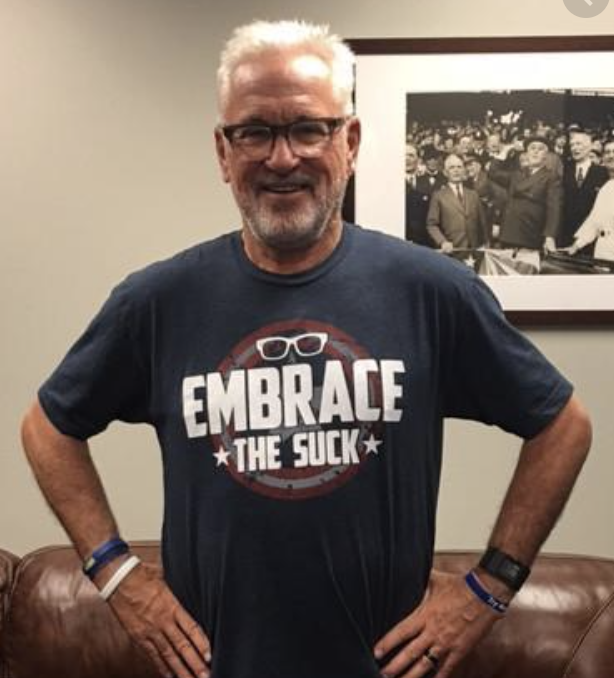
At the same time, no one has ever done it the same way before. You bring a unique skill set to the table that no one can tell you how to use. The sooner you embrace this, the quicker you can take advantage of it.
“When I work with entrepreneurs today, this is the main thing I try to convey,” said Horowitz. “Embrace your weirdness, your background, your instinct. If the keys are not in there, they do not exist. I can relate to what they’re going through, but I cannot tell them what to do. I can only help them find it within themselves.”

